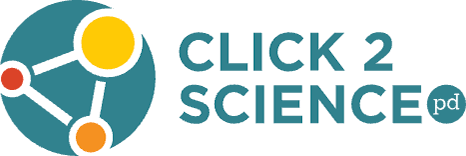Getting the Most Out of NGSS: Using the Crosscutting Concepts
The Next Generation Science Standards (NGSS) Crosscutting Concepts provide us with a great way to help youth bridge science learning across various contexts.

I love using the Next Generation Science Standards (NGSS), especially the Crosscutting Concepts (CCCs), to frame informal science education experiences for youth. The CCCs are incredibly useful for informal science learning because they help youth to make connections between the different areas and disciplines of science and helps them to understand core science ideas that they encounter in other science experiences like school or everyday life. To help other informal science educators use the CCCs, I will be writing a series of blogs for Click2Science about what the CCCs are and how we can use them effectively.
Introduction to NGSS and CCCs
Ever since I started working in science education, I have been leery of science standards documents. I found them to be either too general, too specific, or too concerned with responding to political climates. Beyond those issues, I also feel that the standardized management movement in education, of which state and national standards comprise a piece of, de-professionalizes educators, creates learning environments that are not conducive to creating joyful, enthusiastic learners, and de-legitimizes informal science learning opportunities. So I was skeptical when the Next Generation Science Standards (NGSS) were being created. In fact, when they first came out, I was disappointed that they never even used the word ‘inquiry’ and instead, talked about Science and Engineering Practices. After reviewing, learning about, and using the NGSS in formal and informal learning environments for the last 10 years, I now find myself saying how much I like these standards! The elements of the NGSS that I like the most are those Science and Engineering Practices that I was so suspicious of and the Crosscutting Concepts. In this series of blog posts, I will be talking about how informal science educators can take advantage of the Crosscutting Concepts in the NGSS to create programs that can help youth take what they learn and apply it to all the diverse science experiences that they may have.
The Crosscutting Concepts are one of the three major dimensions of the NGSS, with the other two being the Science and Engineering Practices and the Core Disciplinary Ideas. The CCCs are seven concepts that span disciplinary borders and unify the core concepts in the fields of science and engineering. These seven concepts help youth develop a coherent and scientifically based worldview and increase their understanding of science and engineering knowledge. The 7 CCCs are listed below:

An individual’s science education is made up of diverse formal and informal science learning experiences. Informal experiences like dinner-table discussions, visits to museums, and out-of-school time programs have a cumulative effect on learning and need to be recognized and leveraged as part of an individual’s personal learning journey in science. Although the goals of most informal learning environments differ from formal environments in their emphasis on interest, emotion, motivation, engagement, and exploration rather than imparting knowledge, the CCCs provide us with a great way to help youth bridge science learning across various contexts. In other words, they give youth an incredibly valuable tool to understand core ideas in science and engineering that they encounter throughout their lives. What a
What is your take on the NGSS?
For more information check out these great resources
- NGSS Website
- NGSS Appendix G
- Introductory Video on NGSS by Paul Anderson
About the Author
Vanessa A. Klein, Ph.D. is a 4-H STEM Specialist with Maine Cooperative Extension and Assistant Professor of Extension with the College of Education and Human Development at the University of Maine.
CCC Blog Series
In this series of blogs, Dr. Vanessa Klein introduces the seven Crosscutting Concepts from the Next Generation Science Standards. In each post, Dr Klein explains one of the CCCs, describe an informal learning relevant example of the concept, and provide links to valuable resources. Stay tuned!
Related Resources

Skill: Modeling Science Practices
Using the Crosscutting Concepts – Patterns
Looking for, identifying, and using patterns is a vital concept in science and engineering
Learn More
Using the Crosscutting Concepts – Cause and Effect
Learning about cause and effect is a great way to increase interest and engagement in science.
Learn More